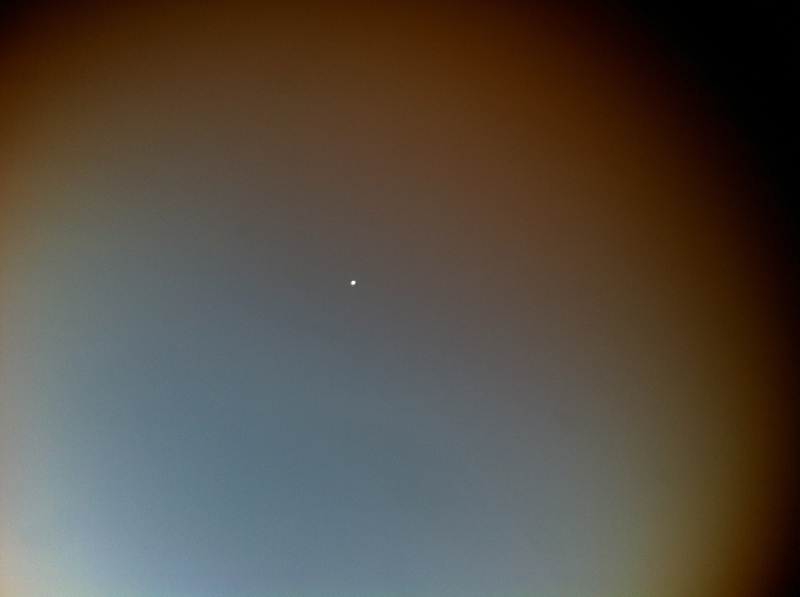
iPhone: Jupiter, Venus, Mercury, Saturn, Moon;
D7000 DSLR: Jupiter-Venus-Mercury
Posted: 24 May 2013
Another pack rat captured and released. Count is now 14 live pack rats and 2 dead ones.
I opened the observatory Thursday, 23 May 2013, at 1836 MST, 91°F. The sky was clear, but once again there were some breezes. This would be a short session as I would be helping a local resident with her telescope later.
At 1847 MST, viewed Jupiter, 83X. This was 33 minutes before local sunset. The equatorial belts were visible. I also viewed Venus and Mercury, 83X, both before sunset. Gibbous phases were visible. I tried for Saturn at 1904 MST, but the sky was too bright. Finally picked it up at 1913 MST, 83X, 7 minutes before sunset. At 1918 MST, viewed the nearly full moon through some tree branches. Sunset was at 1920 MST.
I handheld the iPhone 4 over the 2" 24mm UWA eyepiece and took some photos of the planets and the moon to show the relative sizes of the disks as seen through the eyepiece (83X). The images are unedited and don't show any details other than the respectives sizes. All were taken before local sunset.
Jupiter

Venus

Mercury

Saturn

Moon

At 1926 MST, I began closing the observatory.
The observatory was closed at TBS MST, TBS°F.
I relocated to the front patio, which provides a clear view of the western horizon, so that I could photograph Jupiter, Venus, and Mercury. Mercury became visible to the naked eye at 1939 MST; the other planets were already easily visible. At 1956 MST, I took this photo showing the planets, f/5.3, 1/5sec, 70mm, ISO 400 (mouseover to see labels):

Compare the positions of the planets in the above image to their positions on 20 May and 19 May.
I then drove to the local resident's home where I had gone on the previous evening to continue to show her how to use her telescope. The previous time we were stuck with a handcontroller displaying Russian. Thursday, I found a tip online that allowed her to change the Celestron NexStar handcontroller language from Russian to English. We could now proceed with doing the telescope sky alignment. The breezes from earlier had calmed down. For nearly three hours we used her telescope and I taught her how to do the sky align. We observed a few objects (hampered by the nearly full moon). It was a successful night.
Comments are welcome; use the Comments section below, or you can Email Me. Thanks.
Cassiopeia Observatory Home Page